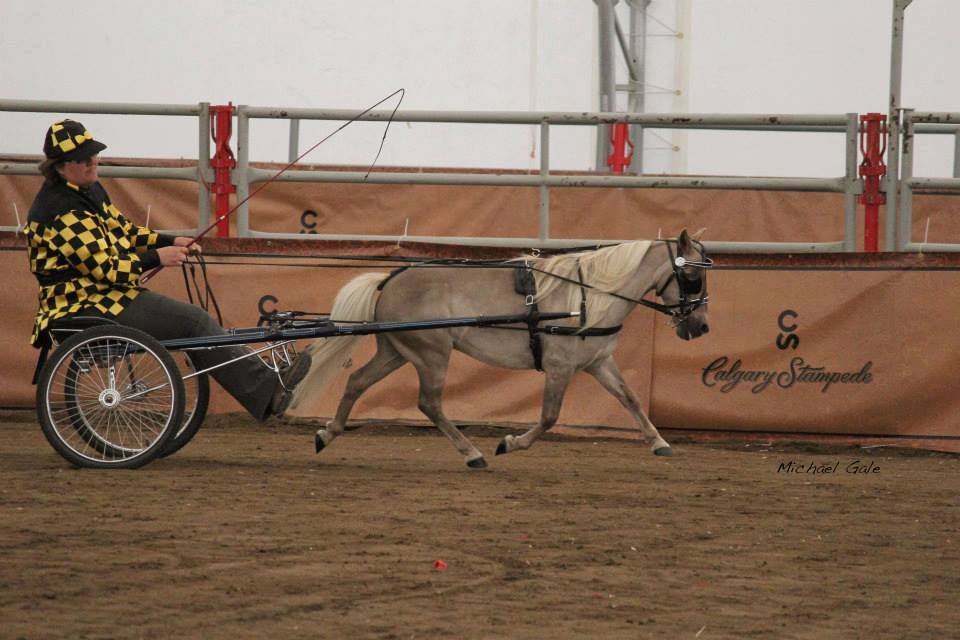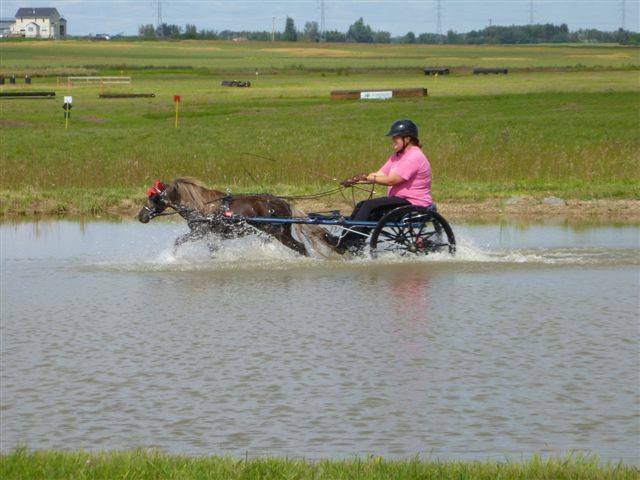I’ve always said that driving is the most fun you can have with your Miniature Horse, and if you’ve clicked to read this post, then that means you’re already hooked or very interested!
Getting Started
First things first – before you invest any further in driving, if you haven’t already driven a horse I strongly recommend that you do. Go take a lesson with a qualified instructor with a good lesson horse, or find a friend with a trustworthy horse who would be willing to help you out. It doesn’t have to be a Miniature Horse – just give driving a try before you start investing in a well trained horse, and all the equipment necessary.
Some people don’t like driving, and that’s okay because there are approximately a million other ways to have fun with your Miniature Horse too! But better to know for sure it’s something you’re going to enjoy before you make a big investment.
Equipment
Good, safe equipment is important. There are those who would tell you that means you have to pay for top of the line harness and carts (usually those who are selling them) and while that that’s a good way to go, I also think you can get started safely with less expensive equipment.
Here’s a few things to look for to help you see if you’re getting a good deal or if you’re cutting costs at the expense of safety.
Harness
Whether you’re buying new or used, leather or synthetic, show or pleasure, there are some universal things to look for in harness.
First, it needs to be safe.
Check that the material used is sturdy (some cheaper, imported leather harness might break easily) and that it’s well made (no loose stitches etc). So many wrecks are caused harness breaking at the worst moment, so check for weak points not just when you buy a harness, but regularly as well, so you can replace or repair any wear before it becomes a hazard.
Second, it needs to be comfortable.
Harness that pinches or rubs your horse isn’t going to make driving fun for them, and if they’re in pain they might react very poorly. Be aware especially of back saddle shape and how it sits on your horse’s back – one that works well on one horse might not on another due to their conformation – and the width and padding on the saddle, breast collar and breeching. Leather is more likely to be comfortable for the horse, but a good synthetic harness is also often lined with leather or other comfortable material to ensure it isn’t rubbing or uncomfortable for your horse.
Depending on the type of driving you intend to do you’ll be looking for different sorts of harness, but whether it’s a fancy show harness, a durable sport harness, or simple training harness, safety and comfort need to be front of mind.
Click here for more on harness and harness fit.
Vehicle
If you’re just getting started, probably you’ll be looking for a two wheeled cart.
Again, while the type of cart you want will depend on the sort of driving you intend to do, the important things are universal.
Once again, first is safety, just as with choosing a harness. The cart needs to be well constructed so that it’s not going to break down and cause an injury to your horse or to you. Wheels are often a trouble spot in lower cost carts – check them closely, upgrade if needed, and monitor them throughout use. Also check that the cart has a singletree where the traces are attached, that moves with the movement of the horse to prevent rubbing or shoulder soreness.
The other big concern is balance. The cart should be properly constructed and sized appropriately for your horse so that when the shafts are at the correct level and the driver is in the seat there should be very little weight in the shafts. The horse shouldn’t be carry the weight of the cart and driver, they should be pushing it with the collar of the harness. You can check the balance of a potential cart by having someone sit in it while you hold the shafts, to see where the balance point is and if it’s going to be appropriate for your horse.
Especially if you’re investing in a pricier cart, be sure that it’s appropriate for the sort of driving that you are planning to do with your horse. A beautiful, well balanced cart that’s made for the show ring may be very different than a beautiful, well balanced cart that’s made for combined driving, for example.
For more on hitching to a cart, click here.
The Horse
There is an old horseman’s saying that “Green + Green = Black + Blue” which means that if you’re a green driver, then maybe a green horse isn’t the best choice for you.
Ideally, it’s great to buy a well trained schoolmaster horse to learn from. Unfortunately, that’s not always the easiest thing to do. Not only are truly well trained, beginner safe driving horses at a premium, but it can be hard to know if a horse is truly going to be a beginner driving horse if they’ve only previously been driven by a professional, not to mention if the seller is on the same page as you are about what a beginner safe driving horse means.
If you do have a horse already who you’d like to start in harness, having an experienced trainer start them can be a great way to go, and then you can go take some lessons as well, so you can learn together under the guidance of an expert. Once again though, while that’s a great choice in theory, it can be very tricky to find an experienced trainer who is in your area, and sometimes even harder to know if they actually have the right qualifications to give your horse the skills on confidence they need to be a safe and happy driving horse.
And if you aren’t able to do either of those, then I believe that you can start your own horse in harness safely, but you will need to take it very seriously, educate yourself at every opportunity, and listen to your horse at every step of the way. Take your time, put safety first, and ask for help if you aren’t sure. The biggest mistake that people make is thinking that “training to drive” just involves putting the harness and cart on the horse and going for it. Training them to drive is best done in very small, incremental steps, making sure they have all the basics they need to know long before they ever see the cart.
For more on training your own horse click the links below:
Is your horse ready to start driving training?
3 Tips to Make Ground Driving Easier
Training Your Miniature Horse to Drive Online Course
While this post is just the most basic overview of everything there is to learn about driving, I hope it’s helpful and gives you a place to start – have fun driving!



Love the green+green=black +blue 🙂